Sprawling 5,000-year-old cemetery and fortress discovered in Poland

A gigantic, 5,000-year-old complex of long barrows and stone-lined tombs has been unearthed in Poland, after archaeologists investigated lines in crops in a field that they'd seen in a satellite photograph.
Archaeologists began to excavate the rural site near the town of Dębiany, about 30 miles (50 kilometers) northeast of Kraków, more than two years ago. They've now unearthed seven Neolithic tombs, as well as the remains of an early medieval fortress and a Bronze Age burial of two horses. But the full extent of the ancient cemetery isn't yet known.
Related: In photos: 'Demon burials' discovered in Poland cemetery
The archaeologists now think it consists of a dozen barrow mounds, each between 130 feet and 160 feet (40 meters and 50 meters) long, made from earthworks, stones and palisades of wooden poles that have now rotted away. They think it's a relic of the prehistoric settlement of the area by the Neolithic Funnel Beaker people, who are named after the distinctive pottery vessels they made and are thought to have been the first farmers in Europe.
"The megalithic cemetery in Dębiany is one of the largest and most interesting sites of this type in Central Europe," archaeologists Marcin Przybyła and Jan Bulas told Live Science in an email. "It provides us with extraordinary data on the funeral customs of the Funnel Beaker Culture."
Discovery by satellite
Bulas, an independent archaeologist in Kraków, first noticed that straight lines visible in a satellite photograph of the field — the result of subtle differences in the growth of the crops — could be caused by the underground remains of a four-sided structure.
Bulas and Przybyła visited the site and used magnetic gradiometers to measure tiny variations in the Earth's magnetic field and reveal where the underlying ground had been disturbed in the past.
Get the world’s most fascinating discoveries delivered straight to your inbox.
The four-sided shape Bulas had seen in the satellite photograph turned out to be an early medieval fortress and moat from the ninth and 10th centuries, before the first kingdom of Poland was established in 1025.
But excavations in 2019 and 2020 also revealed the Neolithic long barrows, thought to be about 5,500 years old, which the medieval fortress was unknowingly built over.
Although they have now eroded into the landscape, the barrows were once much higher, Przybyła told Science in Poland. They were made by piling earth above a central stone-lined tomb, and were reinforced with palisades of wooden poles; the poles have now rotted away and only traces of their post-holes remain.
The researchers have yet to find any skeletal remains in the central tombs, but they did detect traces of Neolithic burials in the embankments of earth that surrounded them, Przybyła said.
Przybyła and Bulas told Live Science that the archaeological team had also recently unearthed a grave at the site where two horses were buried side by side, along with part of a bridle. They've dated that grave to the middle of the Bronze Age in the region, about 3,500 years ago.
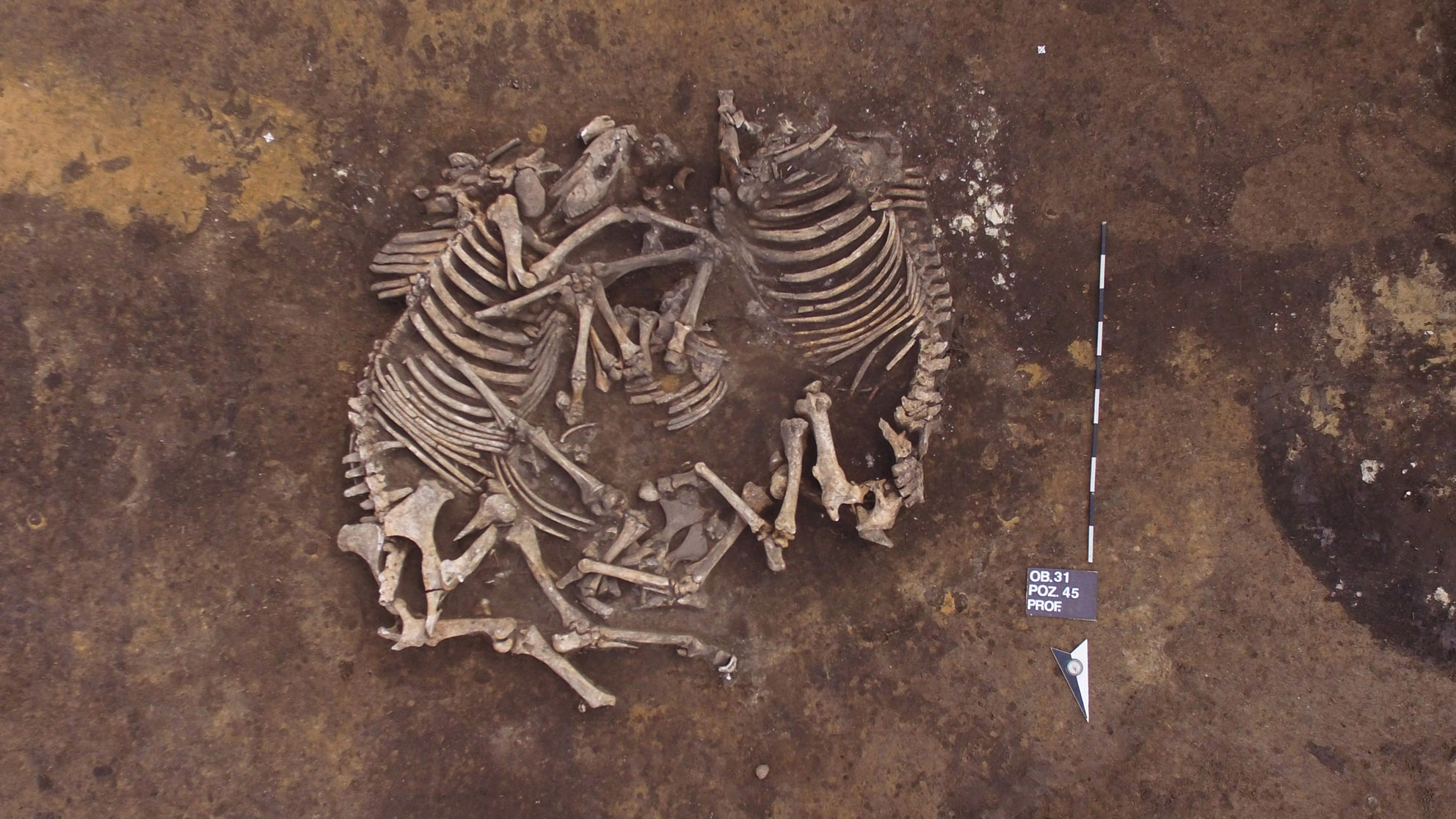

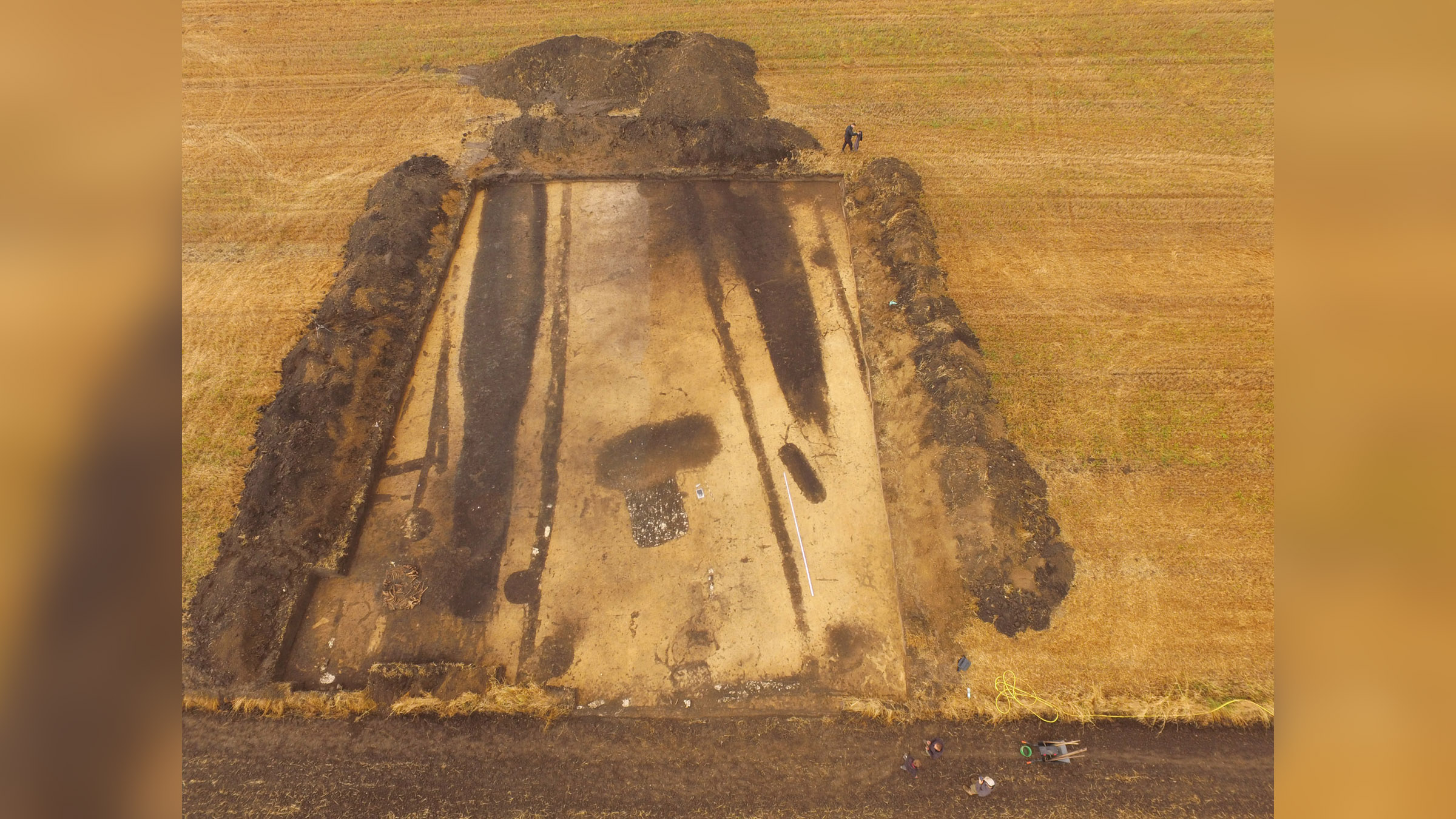

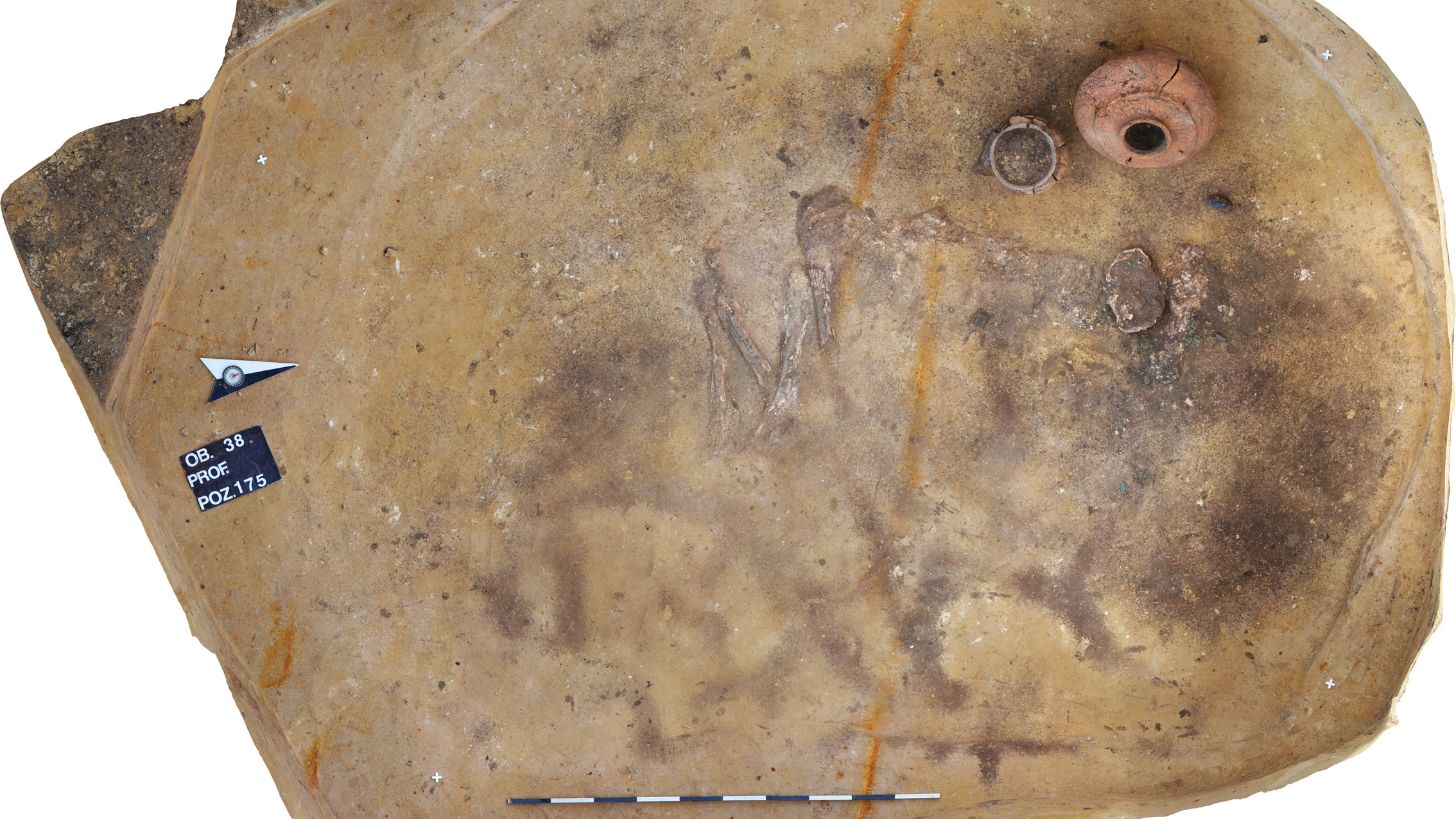
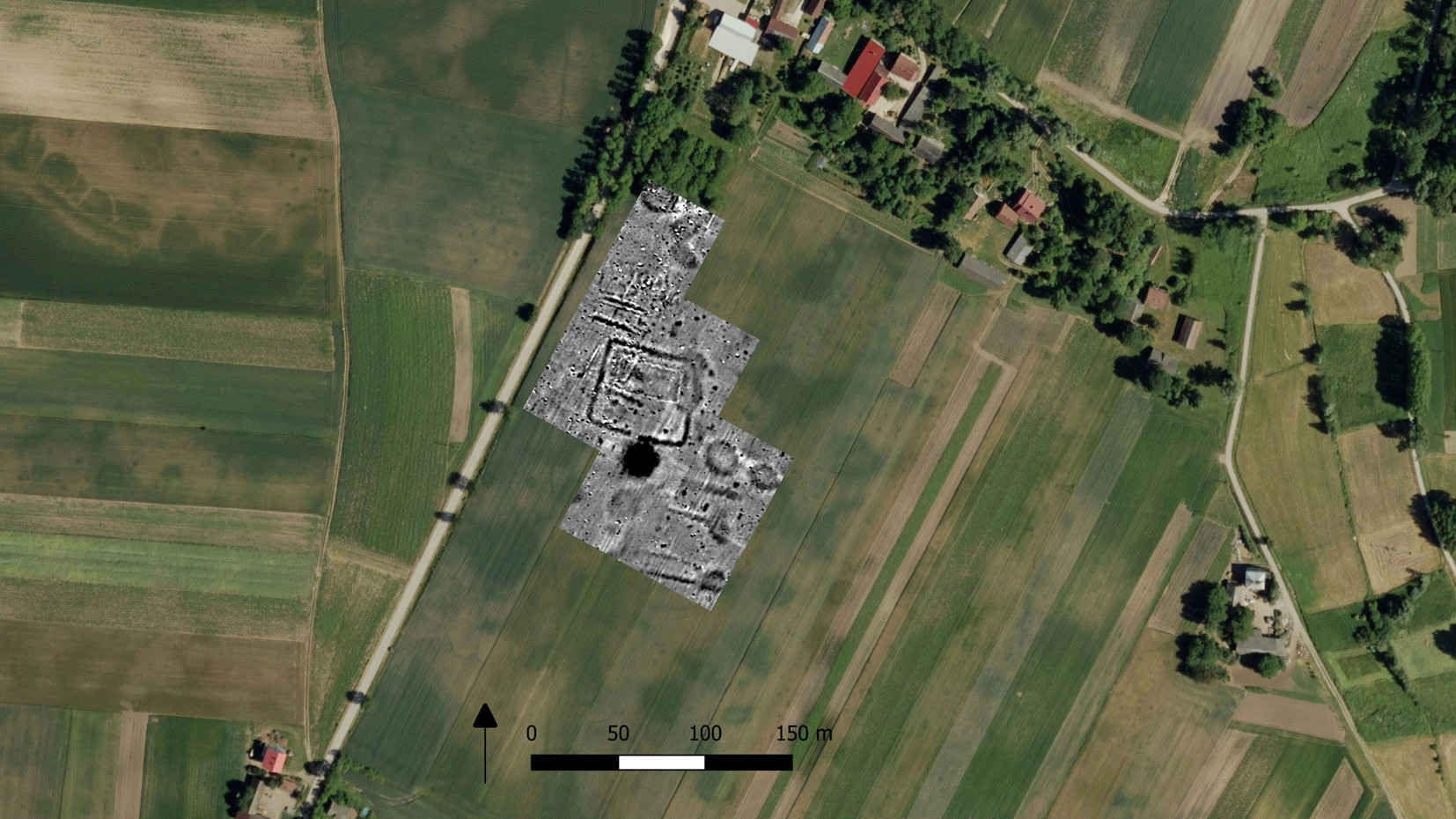
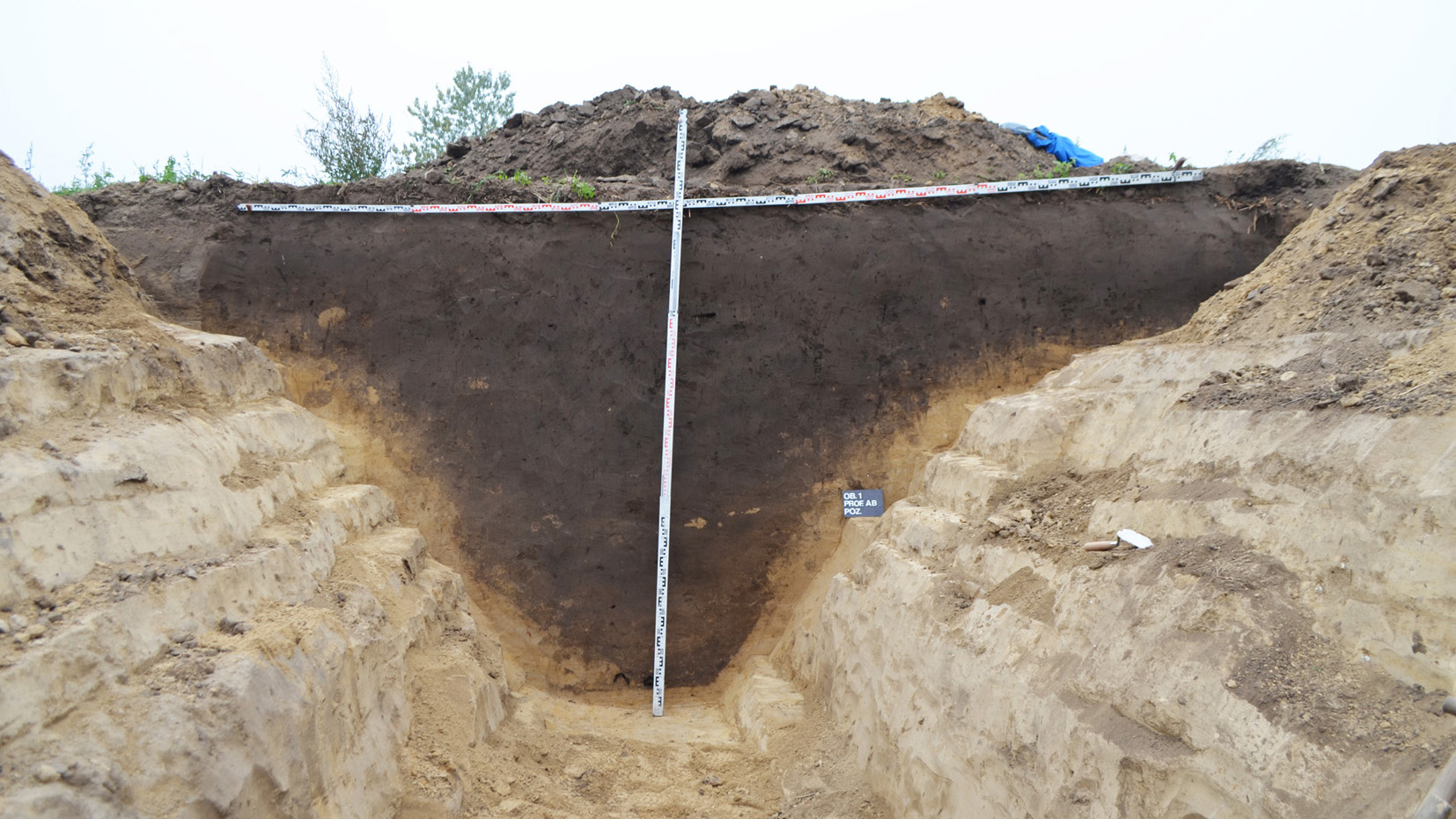
Funnel Beaker people
The Funnel Beaker people who built the ancient barrows near Dębiany spread throughout central Europe from about 4100 B.C.
Related: 7 bizarre ancient cultures that history forgot
It's thought they were farming people who migrated to the region from what is now Spain and France, and who were themselves descendants of people who had migrated from the Balkans, where they had adopted earlier farming practices from the Middle East.
Archaeologists have unearthed long barrow cemeteries made by Funnel Beaker people elsewhere in Poland, as well as in Germany and southern Scandinavia. One of the best known is hidden in a forest in the central Polish region of Kujawy — the enormous burial mounds are sometimes called the Polish pyramids.
But it's thought that the ancient cemetery near Dębiany could be one of the largest complexes of Funnel Beaker barrows yet found, Przybyła said.
The archaeologists plan to continue their excavations to learn more about the Neolithic barrows and tombs, and also about the remains of the medieval fortress and moat that first drew them to the site.
So far the archaeologists have found no evidence that the fortress was permanently inhabited — they think it may have been a military encampment — and no similar structures have been found in Poland.
Przybyła and Bulas said it was a "unique discovery" that would help them study the fortification techniques used during the ninth and 10th centuries, which was a turbulent time in Polish history.
Originally published on Live Science.
Tom Metcalfe is a freelance journalist and regular Live Science contributor who is based in London in the United Kingdom. Tom writes mainly about science, space, archaeology, the Earth and the oceans. He has also written for the BBC, NBC News, National Geographic, Scientific American, Air & Space, and many others.


